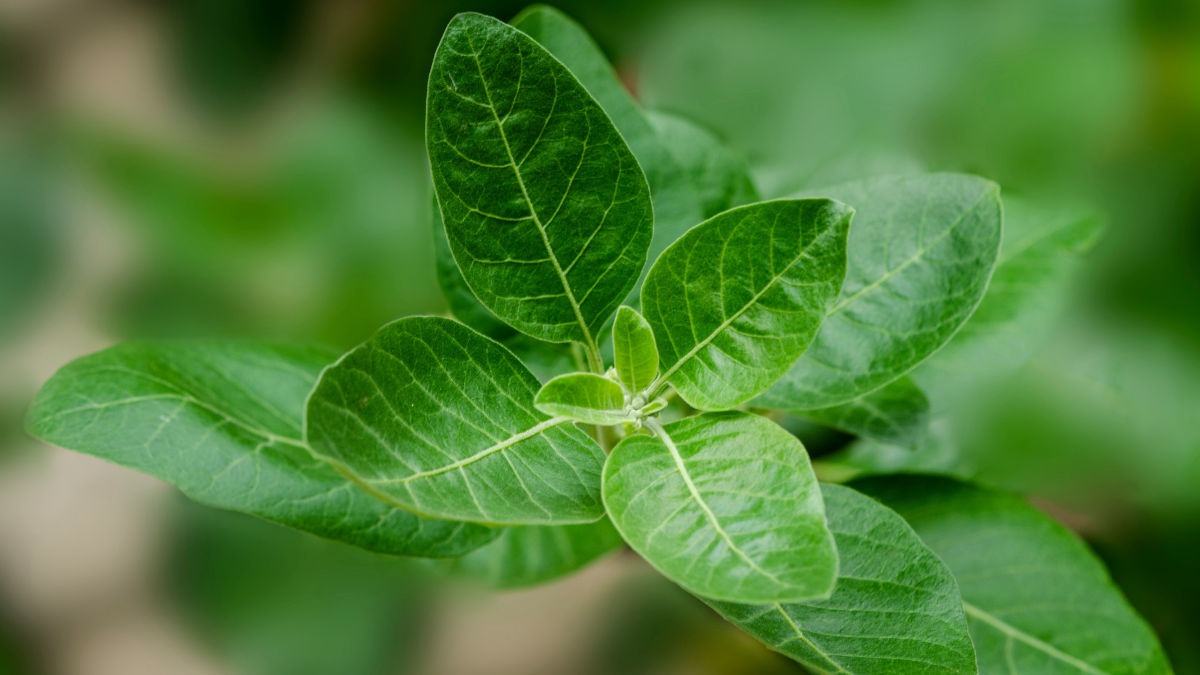Ashwagandha has been used as an Ayurvedic medicine for centuries, it is also known as Indian ginseng and winter cherry. Its roots are used in making Ayurvedic medicines and herbal products. The special thing is that this plant can be easily grown even in dry and hot areas. This is the reason that today farmers and gardening people are getting attracted rapidly towards its cultivation.
According to agricultural experts, Ashwagandha is a straight growing plant. Its height can be about 1.4 to 1.5 meters. This plant is known to grow easily in dry and hot areas. Ashwagandha is also known by the name of Indian ginseng, poison Gujberry or Winter Cherry. This is a herbal plant, which is grown well in the North-West and Central Region of India.
In which states of India, Ashwagandha is grown?
Ashwagandha leaves are light green and oval, which are about 10–12 cm long. Its flowers are small, green and in the shape of the bell. When the fruit is cooked in it, its color usually becomes orange-red. Madhya Pradesh, Gujarat, Haryana, Maharashtra, Punjab, Rajasthan and Uttar Pradesh are the major states of Ashwagandha in India. The climate and soil of these areas are considered appropriate for their plants. Its production is on a large scale in these areas.
Health benefits
Ashwagandha helps in strengthening the immune system, it helps in reducing cholesterol, keeping sugar level under control, depression etc. Apart from this, many benefits of Ashwagandha are also mentioned.
Selection of soil
It is believed that Ashwagandha crop can grow well in sandy loam or light red soil, but for this, the drainage of water in the soil is also necessary.
Land
The soil of the land selected for the cultivation of Ashwagandha is made well by plowing the soil. Before the onset of rain, plowing 2 to 3 times is considered beneficial to make the soil fine and soft. Use of cow dung manure can benefit it.
Seeds, nursery and plant planting process
Ashwagandha crop is prepared from seeds. Choosing high-quality seeds is considered beneficial for this, which are sown in a well-prepared nursery bed. The seeds can also be sown directly through the spatting method in the field, but it is considered better to plant plants in the field with transplanting method.
It is considered necessary to have a well -maintained nursery for the quality of export level. The nursery bed should be made slightly higher than the ground and the garden compost and sand should be prepared by mixing it well. About 5 kg of seeds may be required for transplanting in 1 hectare field.
The nursery is prepared in the months of June and July, seeds are sown just before the monsoon starts and light sand is covered by adding. Seeds usually sprout in 6 to 7 days, when the plants turn 35 to 40 days, then they can be transplanted to the main field.
Seed process
After adding manure to the soil, weeds should be prepared at a distance of 50 to 60 cm in the field, it is considered appropriate to plant 35 to 40 days old healthy plant at a distance of 30 cm. If you adopt broadcasting for sowing seeds, 12 kg of seed per hectare is considered quite, but the way of sowing line from line can be better. This makes the growth of roots good.
It is considered appropriate to sow the seeds in a depth of 1 to 3 cm, after which it should be covered with light soil. It is considered appropriate to keep the distance 20 to 25 cm from the line to the line from the line and the distance of 8 to 10 cm from the plant to 8 to 10 cm. Spaceing can also depend on the fertility of the soil and the variety of ashwagandha. It is necessary to do light irrigation at the time of transplanting plants in the soil. Ashwagandha plant does not require much water, it can be considered appropriate to provide water once in 8 to 10 days for its better production.
Harvesting time
The time of harvesting of the plant is when the leaves of its plant start drying and the fruits of red-orange starts appearing on it. Ashwagandha crop is considered ready for harvesting 160 to 180 days after sowing.
The entire plant is uprooted for harvesting, because its roots are most commonly used. Subsequently, the stem is cut off from the rest by cutting 1–2 cm above the crown (top of the root). The roots are then cut into small pieces of 8 to 10 cm so that they can be easily dried.
—- End —-

